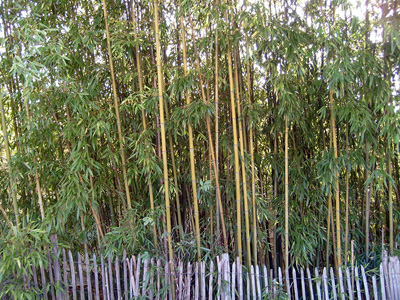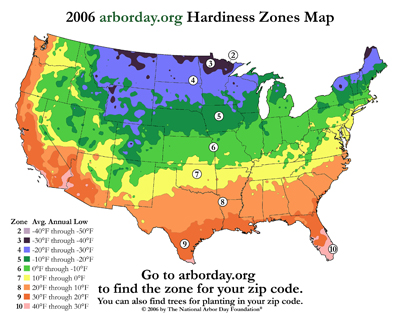Bamboo Placement and Preparation
How to Grow Bamboo - Article Contents
Bamboo Placement - Climate, Sunlight, Wind, Soil, & Spacing
Preparation of the bamboo growing site is an important first step. There are 5 main factors to consider when determining the placement of your bamboo specimen: Climate, Sunlight, Soil, Wind, and, Spacing.
Climate - The very first concern for a bamboo grower is the local climate. Our hardiness chart is a great resource to determine which species will thrive in your area. Bamboos tend to favor tropical and warm temperate climates, although it is possible to grow bamboo in adverse conditions, such as deserts and cold mountain regions. To ensure success, research the type of bamboo you are interested in growing and see if your climate has the ability to support it. You can usually find the best advice by asking fellow bamboo growers and nurseries in your area. You can learn more about hardiness zones here.
Sunlight – Most bamboos will flourish in full sunlight. This is especially true for giant bamboo. Some tropical species, however, may require some shade during the hottest parts of the day. Surprisingly, shade is the most important during the winter months. When frost is combined with direct sunlight it accelerates the depletion of water from the plant. If frost is common in the winter, we advise that you choose an area that receives at least partial shade at some part of the day.
Soil – Bamboo is not particularly selective when it comes to soil, but there are a few basic guidelines to follow. Nearly all bamboos will do well in either loam or marly soil. Loam is a type of soil composted of sand, silt, and clay, with the concentration being 40%, 40%, and 20%, respectively. Loam generally has a high amount of nutrients and provides a greater amount of drainage than silty soils. In general, bamboos prefer a slightly acidic to moderately acidic soil. Rocky and/or soggy soils should be avoided. Heavy and impermeable soils are also undesirable due to their tendency to slow the growth of bamboos and can also lead to water pondage and rhizome rotting. This tends to be a problem on a flat landscape and can be avoided by installing a drainage system before planting. If you already have a garden growing in your area, there should be little soil preparation needed to get a bamboo plant established.
Bamboo shoot, notice the bamboo leaf mulch.
It is a desirable to create a layer of mulch around the bamboo to protect its roots and rhizomes, which are especially vulnerable during the early stages of growth. Mulch is used as a protective layer to shield the base of the plant from the effects of a harsh environment. In areas with heavy storms, wind, or heat, using a layer of mulch is a highly recommended practice. For bamboo growing, organic mulch is the ideal choice. You can create your own blend of mulch by mixing together 1 part dried leaves and 1 part organic compost. This will give the plant sufficient protection, while also feeding the bamboo nutrients.
Wind – Bamboos have a fairly shallow root system. Conversely, they grow tall and fast. This makes bamboo susceptible to wind damage. Not only does wind have the potential to uproot a bamboo plant, but it can also lead to dehydration. Bamboos require a high amount of water and constant winds will dry them out. Gardens with surrounding hedges or trees are excellent for wind protection. It is also possible to create a makeshift wind barrier.

Bamboo fence or privacy screen. (Photo: Francois Obada)
Spacing – Spacing multiple bamboo plants in extremely important, especially when building a hedge or privacy screen. The general rule of thumb on a hedge is to space the bamboo 3-5 feet from each other. This will create a fairly dense privacy screen. If money or availability is a concern, you can space the plants farther apart, but expect to wait up to a couple years for the hedge to fill out completely.

